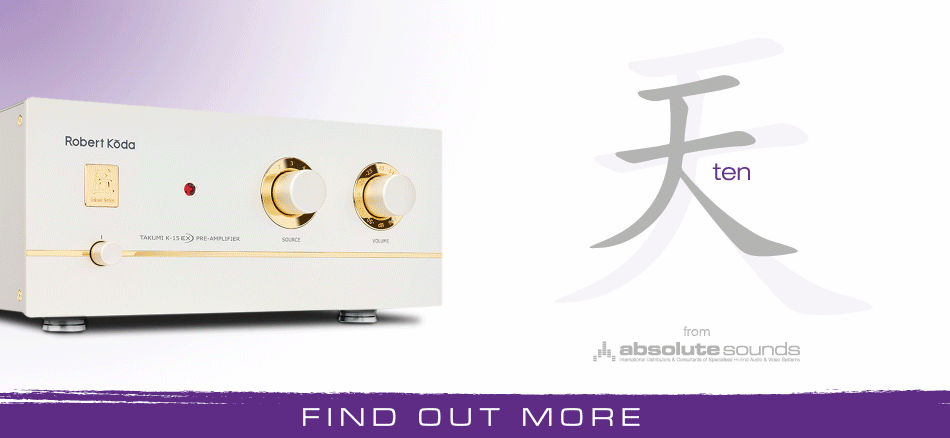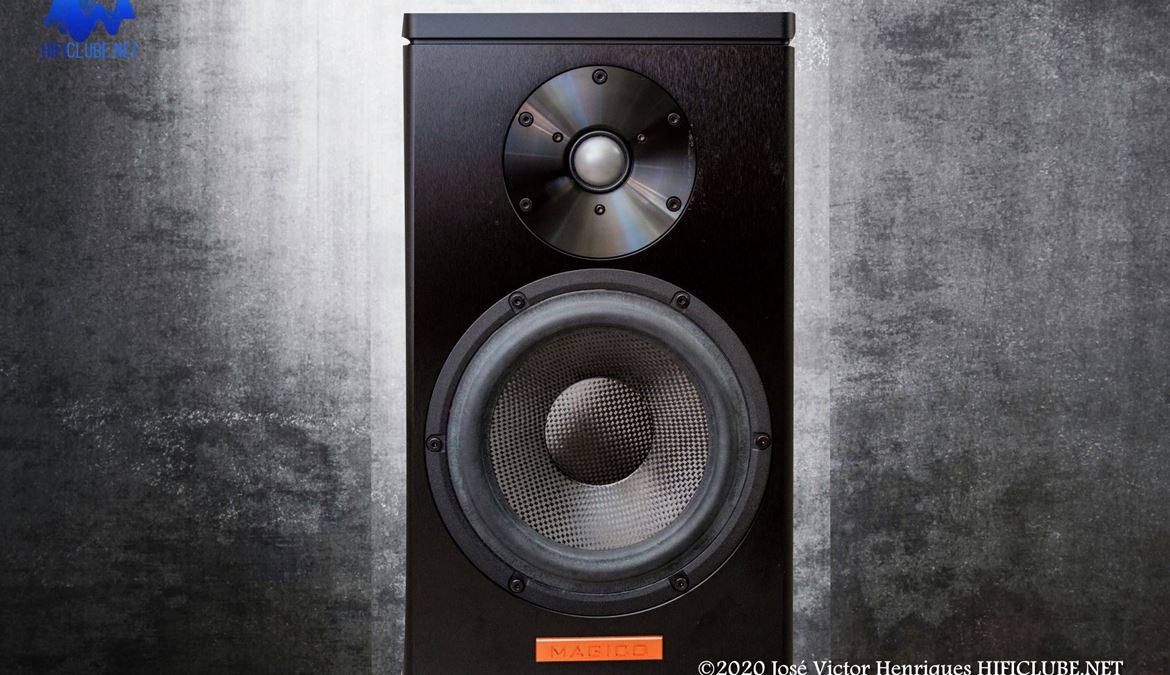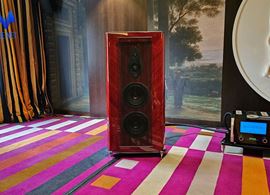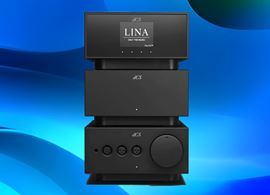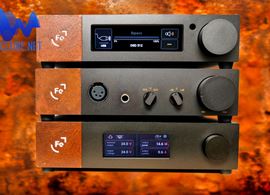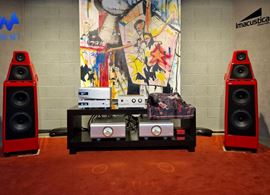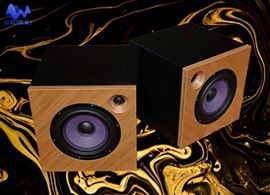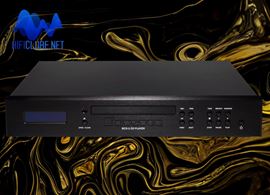JVH is a war veteran, so he knows that 'full metal jacket' refers to bullets not speakers, which are a source of music, and therefore of life - not death. But he could not resist making the association because the A1 has the impact, the solidity, and speed of a piercing bullet.
In his most recent interview for Hificlube.net, Ricardo Franassovici proposed a set consisting of Krell 300i integrated amplifier with DAC and Magico A1 speakers as a high-end entry system (up to 20 000 euros).
I had already tested the Krell 300i, so I was proposed the Prima Luna EVO400 (integrated) as an alternative, a marriage that is still in its first stage of dating. I'll tell you all about it when they come to terms in the best social network gossip style.
At a more advanced stage of intimacy and complicity was the relationship between Magico A1 and Copland CSA100, which I used in the present analysis as a dedicated partner. Thus the Magico A1 failure or success can also be attributed to the CSA100.
Preamble on Criticism
Audio critics, or reviewers, the polemical class in which I humbly include myself, suffer to a greater or lesser degree from the 'existential doubt' syndrome: how to write something fresh in the context of a pattern that tends to repeat itself ad nauseam?
Tests seem to repeat themselves in time, like history, only the name of the hero changes. And it is always a superhero!...
It goes like this:
First comes the description of an innovative product transcribed ipsis verbis from the manufacturer's press release, followed by a more or less in-depth critical analysis. Some use a performative table, supported or not by laboratory tests, which say little or nothing about the reality they have measured and are sometimes even contradictory, but always give an air of seriousness to the affair at hand.
Then, the reviewer debits a 'horoscope' type of babble based on half a dozen selected tracks from 'exotic' records, and the more they are unknown to most readers, the better. I know someone who uses comments pre-written on cards, then shuffles the cards and deals them again.
Finally, the reviewer 'wraps' everything up in the colorful paper of a flattering conclusion because life is hard on everyone. The manufacturers don't like to be told off, least for their own children misbehaving badly.
The conundrum of Gods predestination
For Anglo-Saxons a conundrum is a 'puzzle' that has to be solved so that no 'heads roll'.
My solution is to test what gives me pleasure and gently return what might give me a 'headache.' Life is too short to waste time on people (and things) that suck. That's why the 'criticism' is generally upbeat and seldom negative. It's a conviction, not a bias.
Nobody can accuse me of not trying to be always original and different, avoiding 'uniformity' as the devil runs from the cross.
The present standardization imposed by editorial criteria consists of a template filled with text and images and subject to pre-approved 'layouts', resulting in a monotonous landscape and the accompanying feeling of dejá-vu/lu somewhere.
Hifi magazines today function as gated communities, which also tend to standardize the behavior of those who write and those who read, subject to the dictates and norms imposed by the 'administration.' He who reads one review has read them all.
In the footsteps of Hifi magazines
By the look of the magazine cover, I know what's inside. Before I got my hands on the exact pair of Magico A1, it had been around at HiFi News, Hifi Choice, and Hifi +. Magico A1 needs 100 hours of burning, which others were kind enough to do for me...
So, before meeting the A1, I already knew what the outcome would be. I am joking, of course. It is not possible to know all about something or someone through a third party. Reviewing is a surrogate; always listen for yourself!
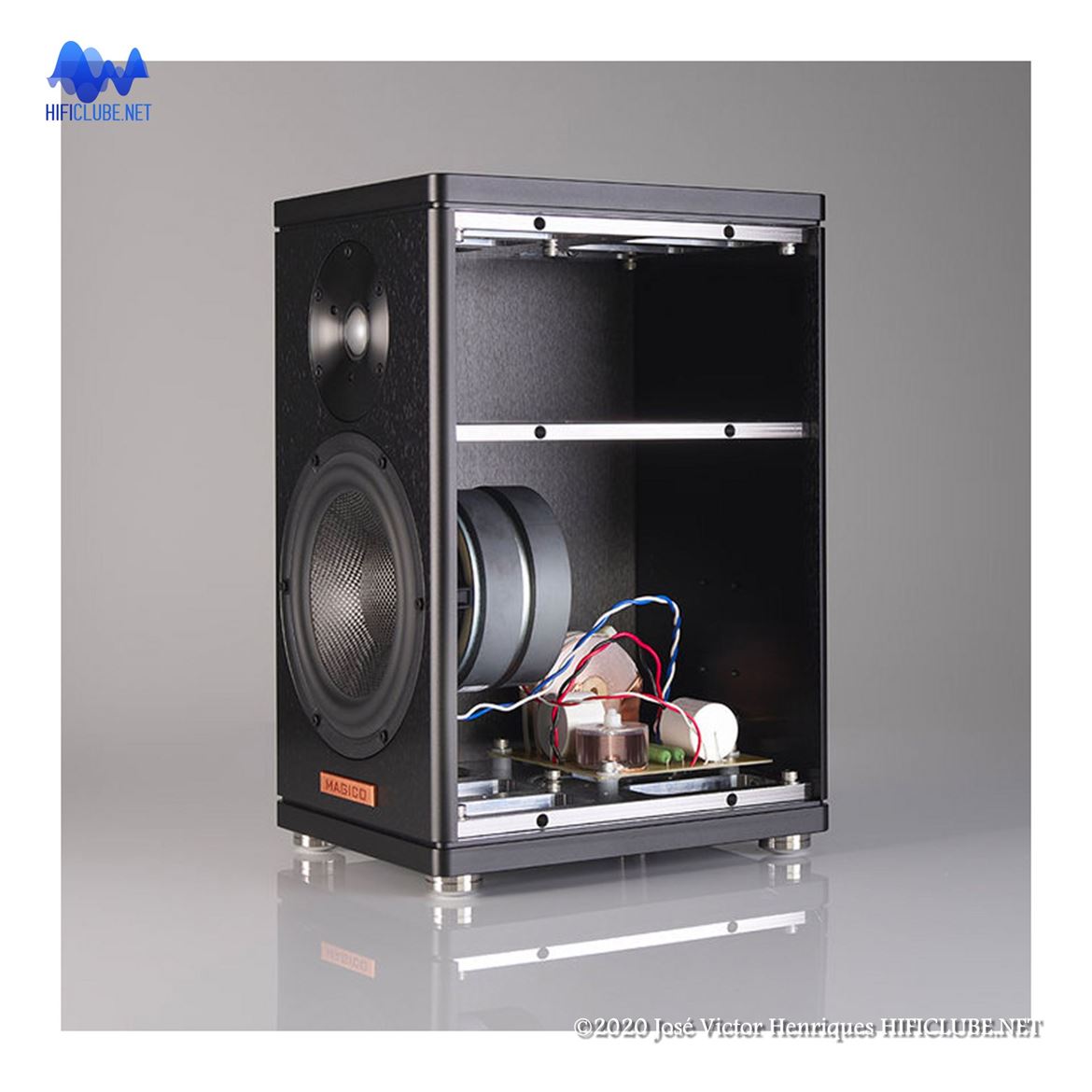
The art of hifi magazine transcription
All the A1 reviews already published will supply you with the same information provided by Magico itself. All they do is transcribe from the press release, hopefully, the white paper.
The A1 is constructed by six solid plates of 9.5mm 'avionic' aluminum, internally reinforced at the top, bottom, and inner space between the tweeter and midrange by other aluminum structures that eliminate any chance of vibration or resonance.
Beryllium tweeter and graphene mid-bass
Then we learn that the A1 has fitted the same 28mm beryllium dome tweeter used in the A3 and A5. There are some discrepancies here: Alan Sircom says that the beryllium dome was vaporized with diamond dust, Paul Miller says no. Paul is always right when it comes to technical stuff. The vaporization of the tweeter is exclusive to the more expensive models.
As for the 165mm mid-bass unit, with carbon fiber sandwich cone and Rohacell foam (Focal's patent), there is no doubt: the cone is reinforced with a layer of 'XG Nanographene'. Marketing departments just love technical name’s dropping.
Graphene, a carbon compound, is 100 times stiffer than steel, with the advantage that vaporization is almost massless. It is ideal for making speaker cones, which one wants to be ultralight and ultra-rigid.
The magic of the ellipse
Finally, the 'Elliptical Symmetry Crossover' which uses Mundorf components (capacitors and coils) custom-made exclusively for Magico, is described in detail (Hi-Fi News) or not so much (by the other magazines).
We also learn that the filter cut-off frequency is at 2kHz, with a very fast 4th order slope (24dB/octave), obtained by mounting a capacitor in series with the low-pass filter coil of the mid-bass.
Now I add: 24dB/octave slopes are usually only achieved with active filters or much more complex passive filters, at the expense of low sensitivity (84 dB) and impedance (4 ohms), which gives the speakers a 'bad temper.' This is not the case here. As Paul Miller quips, Alon Wolf has solved the squaring of the ellipse.
Thus the two drive units of the A1 have a minimum of overlap, unlike speakers with 1st order filters, which are by many considered to be more 'natural', as opposed to fast pendants, which give more 'transparency' and 'speed' to the sound but can sound 'mechanical'. Fortunately this is not the case either.
Tell me what you hear, and I'll tell you who you are
The proverbial critical auditions follow, where 'everyone plays by ear', and use tracks from exclusive or inaccessible records to illustrate the excellence of the A1's performance, in terms of:
System matching and placement in the room; treble, mid, and bass; micro and macro dynamics; presence and attack; transparency, clarity, detail; colorations or lack thereof; resolution and 'air' or 'atmosphere'; texture and structure; stereo image 'openness' and focus 'specificity'.
In short, the litany that all critics' sing' (myself included) concludes that the A1, being so small - and solid! – goes where many big ones can't.
David and Goliath
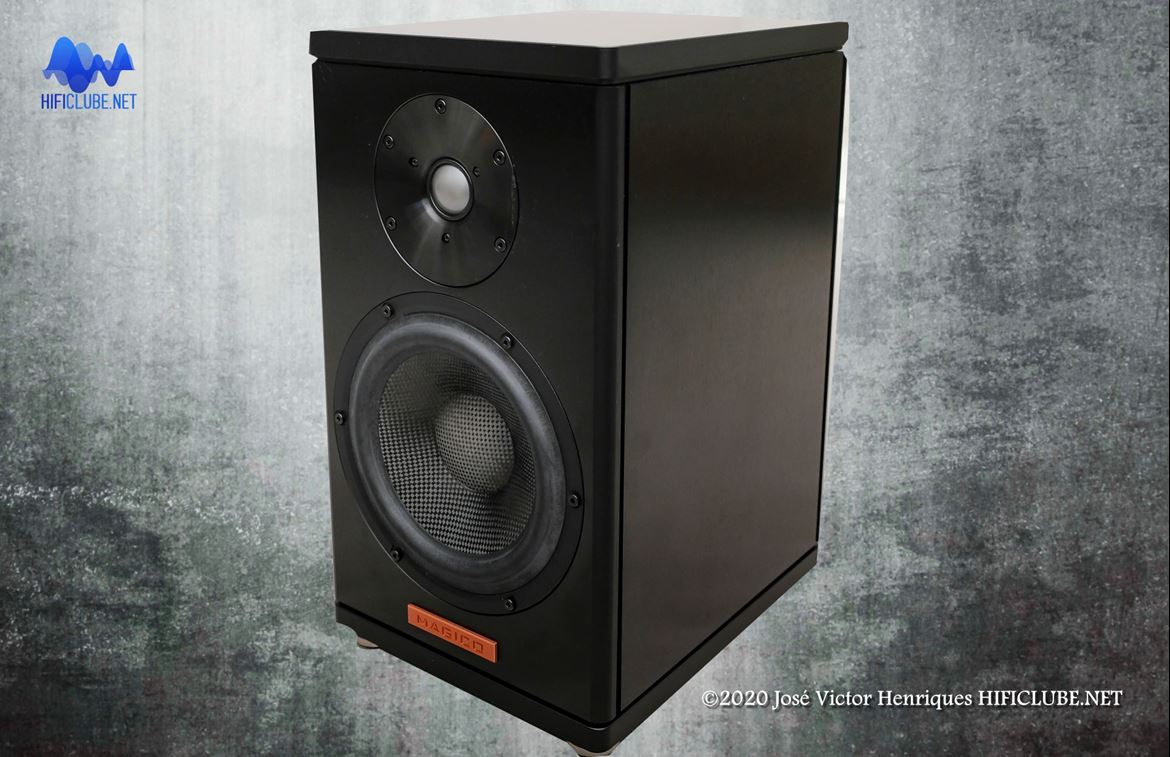
Which is the pure truth, let it be said! Alon Wolf is a native of Israel, so I'll go even further: the A1 is the audiophile personification of little David, who has defeated the giant Goliath.
And we could call it a day. Portuguese readers tend to accept as more valid what comes from abroad, especially if an Englishman or an American writes it. So my writing in Portuguese is like 'rain on a wet field'. Which, by the way, has given me good harvests over the years.
Personal approach
When I integrated the A1 into my desktop system and listened in the near field, without care or too much expectation, flanking the computer screen, as if they were mixing desk monitors, powered by the excellent Copland CSA100, I immediately realized that the A1 had to be approached from a (somewhat) different perspective.
Of proximity and intimacy. Therefore, a more personal view, less standardized, and in a less matter-of-fact way.
There are many things I don't know - and I have seen (and heard) so many things between heaven and earth that I can no longer remember. But I still can tell that a speaker is a great speaker when I hear one.
The lockdown imposed by Covid-19 was already beginning to leave its toll of idle fatigue that promotes laziness and disinterest. Then, A1 arrived, and I started listening to a lot more music at home - all kinds of music - and for longer periods.
Emotional and physical empathy
It's the first symptom of empathy between man and machine. And this empathy is unimpaired by the volume selected: the A1 plays just as well at low or high levels, a plus for my locked down family's well-being. So the emotional experience is the same, yet the physical experience is different.
...physical impact that the body feels - and the eyes deny…
It is like moving from the informative filigree of a Quad ELS57 (here further underlined by the sharp, dynamic bass pencil stroke) straight to the attack, speed, and projection of a horn speaker, without the associated colorations.
And with a physical impact that the body feels - and the eyes deny, the A1 being such a small monitor, thus a speaker that otherwise would advise parsimony in the use and abuse of the lower octaves in music.
Therefore it was unique and unheard of that my daily musical program should include such an appreciable number of tracks with high percussion content. I enjoyed the rhythmic interplay between the drum pedal and the bass guitar or the euphoria of the drums and the telluric bass of movie soundtracks.
Non-stop musical sessions
I can't even remember how many times I have left it up to Roon to choose, without ever having refused a single suggestion from the intelligent algorithm.
A1 extracts from music, all music, the best it has to give you: right now I'm listening to ‘Picture Of Love’ by Clarence Spady at concert levels.
The flirtation between drummer and bassist is just one of A1's favorite 'tricks', while the guitar shares our attention with the saxophonist both framing Spady's voice, in the best style of Robert Cray and Keb Mo. It just makes you want to listen more.
Encouraged by Roon, the A1 took me by the hand every day to discover new ground and recover endless musical memories.
Al Jarreau pays homage to George Duke: have you ever heard the rhythm section of ‘Somebossa’, with the sax surfing the percussion crest?
Or the syncopated pulsing of ‘Bostich’, by Yello? And 'The Nightfly' by Donald Fagen, the man of the seven instruments?
Kendrik Lamar, anyone? Open the music video of ‘Humble’ on YouTube, crank it up, and listen to the sound through Magico A1. It's like driving up the highway, breaking all the audiophile, social, and traffic rules!...
How many years since I had heard ‘You Curl Your Toes in Fun’, by Jethro Tull? The guitars, the flute, the voice... It makes your toes curl in fun while longing for lost youth.
Now listen to 'Mar de Sofia', by Bethania, from beginning to end, until the sun disappears, melting on the horizon over the sea. It makes one feel gratitude for mature age when the beauty of simple things seems to have more value.
My meeting with the A1 turned out to be an authentic third-degree close encounter: the A1 is from another world! 'Close Encounters of the Third Kind', by John Williams, is now playing. How old was I then?
meeting with the A1 turned out to be an authentic third-degree close encounter: the A1 is from another world!
Ah, and what about human voices that God only bestows upon the elected?
What about it: both singing and speech? Bethania reciting Sofia, Richard Burton reading Dylan Thomas; or Jeremy Irons narrating Sugar Plum On the Run (all available on Tidal).
Or even, and more prosaically, watching Seinfeld without subtitles and not missing a single one of the many jokes underlined by those magical Jonathan Wolf riffs played with the slap bass technique, a la Marcus Miller. Everything sounds 'magical' with Magico A1: attack, tone, contour, structure, and rhythm.
Ten personal thoughts about the A1
- Magico A1 is fast, but speed is not achieved here at the expense of the specific weight and intrinsic energy of each sound, which it reproduces without drag or time drift, and also without the typical ballast of coloration in the bass which is standard behavior for reflex systems;
- Magico A1 does not favor the strings over the body of the violin; nor does it forget the cause (the transient of the initial impact on a drum, for example) to focus on the consequences: the spurious harmonics associated with colorations that may otherwise affect the timbre of drums and bass instruments;
- With wind instruments, the Magico A1 maintains the right balance between the micro information of the reed and the macro information of the horn;
- With voices, sibilance is part of the whole, not an entity in itself, which stands alone to draw the unsolicited attention of the listener;
- Timbre specificity is such that we can focus on instruments, either isolated from the whole or integrated into the big picture, without losing in both cases their identity and personality;
- The A1 sounds cohesive and in tune even at a close listening distance, being a 'two-way'.
- In the near field, the Magico A1 has the resolving power of the best open planar-magnetic headphones, coupled with the power to move a lot more air;
- It is only the Magico A1’s scale that gives way in terms of volumetry: I mean space volumetry, rather than the elements that inhabit it, which always sound well-sized;
- The relationships of time and space are so perfect that you won't miss anything when listening in the near field, not even at bass level, which is taut and intense, with the extension dying its natural death, sparing you the final gasp of the agony of reflex systems.
- Placed on pedestals in a large room, the A1 may feel somewhat 'naked' because they don't wear the upholstering ‘underwear’ of reflex systems. Of course, this can be remedied with judicious positioning closer to the walls, without affecting the uniformity of the sound stage and the comfort of those who inhabit it.
Conclusion
Magico A1 is expensive (10,900€), heavy (22kg), and allegedly too small for the price (39 x 30 x 21 cm). But it has a big heart, protected by an indestructible metal shell, and a sound quality that holds its ground to many floor-standing speakers.
Magico A1 is the best desktop monitor I've ever heard. Period. And more, that I want to keep listening to as long as possible because they are an indispensable work tool.
Note: translation revised and adapted by the author from the original in Portuguese published in August 2020.

